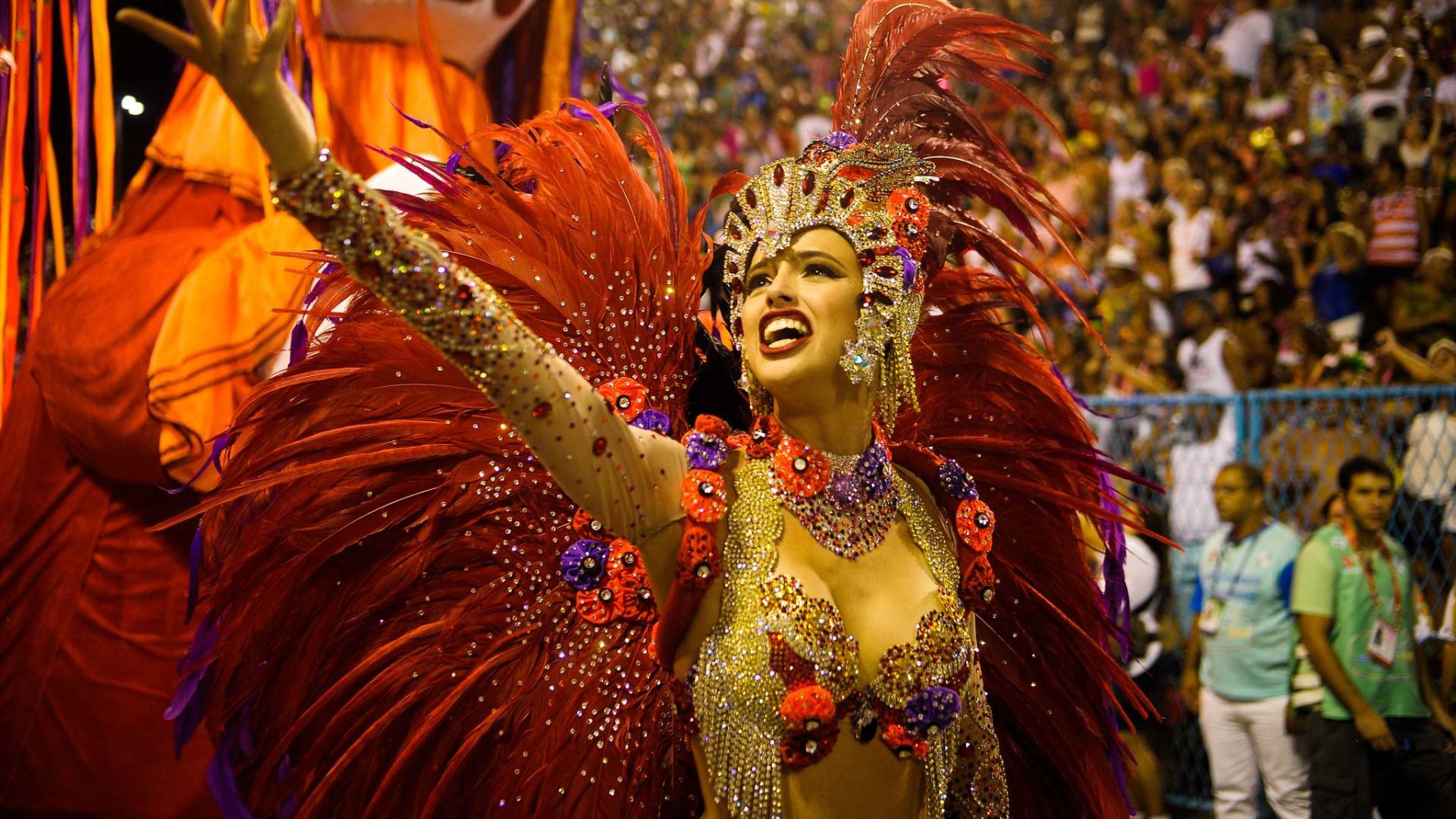- Your cart is empty
- Continue Shopping

History and Curiosities about Rio Carnival
Rio de Janeiro’s Carnival is a celebration that transcends generations and borders, and is considered one of the world’s greatest cultural festivals. With roots dating back to the 18th century, this event has evolved to become a spectacle that combines tradition, art and joy in an explosion of colors and rhythms. Let’s explore the history of Carnival and some interesting facts that make this festival unique.
The Origin of Carnival in Rio
The history of Rio de Janeiro's Carnival begins in the colonial period, influenced by the festivities brought by Europeans, especially the Portuguese. These celebrations, called Shrove Tuesday, involved street games with water, flour and lemon, a tradition that gained its own characteristics over time.
At the end of the 19th century, Carnival began to take shape as we know it today. In 1855, the first masked balls appeared and, shortly after, the streets of Rio began to be filled with organized parades. It was at this time that the first marches began to liven up the festivities, marking the birth of what would become an iconic cultural event.
The Evolution of Samba Schools
The first official samba school was Let it talk, founded in 1928. This pioneer paved the way for the emergence of great names, such as Mangueira, Portela and Salgueiro, who still shine at Sapucaí today.
Over time, samba school parades gained prominence, culminating in the creation of Sambadrome of the Marquis of Sapucaí in 1984, a project signed by Oscar Niemeyer. The space became the official stage of the event, offering an immersive experience for both samba dancers and the public.
Fun facts about Rio Carnival
1. The Biggest Tourist Event in Brazil:
Rio Carnival attracts more than 2 million tourists annually, consolidating itself as the largest tourist event in the country.
2. Luxury and Glory in Fantasies:
The costumes used in the parades can cost between R$10,000 and R$30,000, and are true works of art made by hand with high-quality materials.
3. The Weight of Joy:
Samba school floats can weigh up to 5 tons and require months of work to complete. These floats are responsible for transforming the themes into a spectacular visual show.
4. The Night of Champions:
After the official parades, there is the champions parade, where the best schools return to Sapucaí for a night of celebration and recognition.
5. Street Blocks:
Although the Sapucaí parades are the main highlight, the street blocks are also an essential part of Carnival. Currently, there are more than 400 blocks spread throughout the city, from the most traditional to the themed ones, such as the famous “Bloco das Carmelitas”.
Carnival as Cultural Heritage
In 2012, Rio Carnival was declared Intangible Cultural Heritage of Brazil, a recognition of its historical and cultural importance. More than a party, the event is an expression of Brazilian identity, uniting people from different backgrounds in a collective celebration of joy.
Quirky and Funny Facts
- Record attendance: In 2019, the “Cordão da Bola Preta” block attracted more than 1.5 million revelers, breaking all attendance records for street blocks.
- Unusual Themes: Some schools have already addressed curious themes in their plots, such as the creation of the Universe, Greek mythology and even the daily lives of animals.
- Carnival Live: In 1998, the samba school parade was broadcast live for the first time to several countries, bringing the grandeur of Carnival to a global audience.
Why is Rio Carnival Unique?
What sets Rio de Janeiro Carnival apart from other festivals around the world is its perfect combination of tradition, innovation and passion. Each samba school dedicates almost an entire year to planning and executing its parade, involving thousands of people, from seamstresses to choreographers and musicians.
The contagious energy of Sapucaí, the vibrant sounds of samba and the dedication of the samba dancers make Carnival an unforgettable experience for all who participate.
Plan Your Trip for 2025
If you want to experience the magic of Rio de Janeiro's Carnival, it's important to start planning now. The 2025 edition promises to be even more grandiose, with themes already being prepared by the main samba schools.
Make history! Get your tickets for the 2025 parades.

